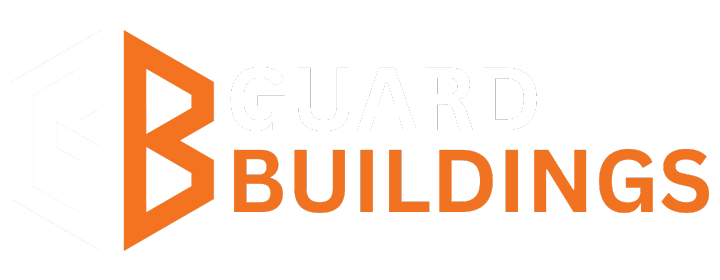A guard booth is more than a security checkpoint—it’s a workplace and a public access point. That means it must comply with multiple regulations, including the Americans with Disabilities Act (ADA), Occupational Safety and Health Administration (OSHA) standards, and local building codes. Failure to meet these requirements can lead to costly fines, delays, and safety risks.
Use this comprehensive compliance checklist to ensure your guardshack is fully up to code.
1. ADA Compliance: Accessibility for All
The ADA sets standards to ensure guard shacks are accessible to individuals with disabilities. Key requirements include:
- Accessible Entry: The doorway should have a minimum 32-inch clear width and be easily operable (lever handles are preferred).
- Height of Counters and Equipment: Any transaction counter must be no higher than 36 inches from the floor.
- Ramp Access (if elevated): Ramps must have a 1:12 slope and include sturdy handrails.
- Clear Floor Space: A turning radius of 60 inches allows wheelchair users to maneuver comfortably.
Tip: Prefabricated guard house can be customized to include ADA-compliant features without major construction changes.
2. OSHA Compliance: Workplace Safety Standards
Guard booths are considered workplaces, so OSHA regulations apply. Essential safety measures include:
- Structural Stability: Ensure walls, floors, and roofs meet OSHA’s general structural safety standards.
- Electrical Safety: Wiring must meet the National Electrical Code (NEC) and include proper grounding and circuit breakers.
- Fire Safety: Install fire extinguishers, smoke detectors, and, if required, sprinkler systems.
- Ventilation and Climate Control: Guards must work in safe temperatures, with adequate heating, cooling, and air circulation.
- Emergency Exits: Shacks larger than 500 sq. ft. may require more than one exit door.
3. Local Building Codes: Regional Requirements
Every city and county has unique codes covering zoning, utility hookups, and building materials. Areas to review:
- Zoning Regulations: Verify that guard shacks are permitted structures for your property type.
- Foundation Requirements: Some municipalities require permanent foundations rather than skids or wheels.
- Utility Hookups: Plumbing, electrical, and data connections must be installed by licensed professionals and inspected.
- Weather-Resistance Standards: In hurricane- or earthquake-prone regions, higher wind and seismic ratings may apply.
Pro Tip: Always request a local building permit and schedule inspections at key construction milestones to avoid penalties.
4. Additional Considerations
Beyond ADA, OSHA, and local codes, you may also need to address:
- Energy Codes: Compliance with IECC standards for insulation and efficiency.
- Security Codes: UL-rated bullet-resistant materials, if required by your industry.
- Insurance Requirements: Meeting insurer criteria for liability and worker safety can reduce premiums.
Staying Compliant from Day One
A non-compliant guard shack can create legal liabilities, accessibility issues, and operational setbacks. By using this checklist during the planning and installation phases, you can ensure that your structure:
- Is fully accessible for all individuals (ADA).
- Provides a safe workplace for security personnel (OSHA).
- Meets all regional building and zoning codes.
If you’re working with a prefabricated guard shack manufacturer, ask for written documentation of compliance. This will save time during inspections and give you peace of mind.
